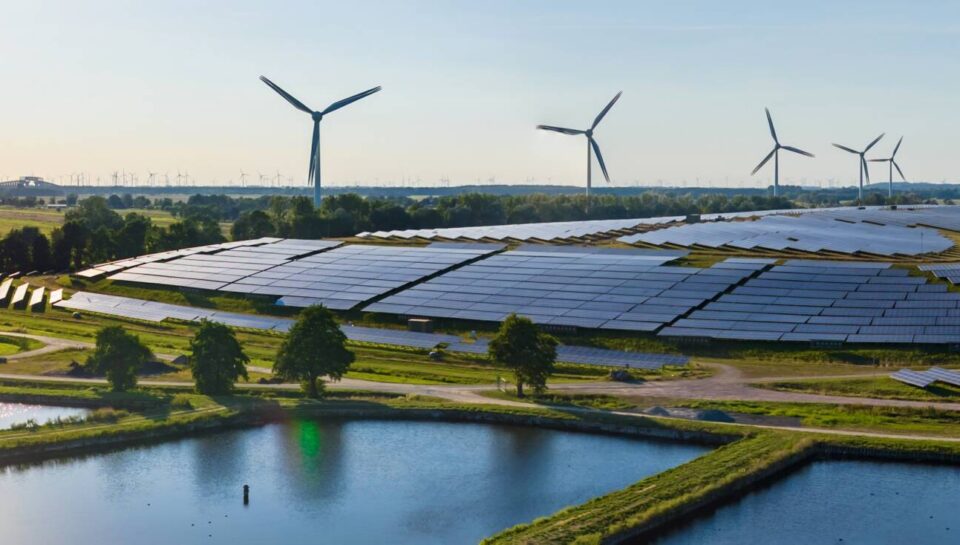The Energy Revolution Nobody’s Really Talking About
You know how sometimes the biggest changes happen so gradually that we barely notice them until they’re right on top of us? Well, that’s exactly what’s happening with energy right now. While everyone’s been debating climate policies and electric cars, something much more fundamental has been quietly unfolding: energy is becoming absurdly cheap. And I mean really, really cheap.
Let me paint you a picture. Over the past decade, solar electricity costs have crashed by nearly 90%, according to the International Renewable Energy Agency. Battery prices? They’ve followed a similar trajectory, with BloombergNEF reporting that lithium-ion battery pack prices hit a record low of $115 per kWh in 2024 (that’s a 20% drop from just the year before!). These aren’t incremental improvements, these are the kind of cost collapses that completely rewrite the rules of the game.
Here’s what’s really wild: we’re not just talking about energy getting cheaper. We’re talking about energy becoming so abundant that its marginal cost approaches zero. Once you’ve built those solar panels or wind turbines, generating an extra kilowatt-hour costs essentially nothing. It’s like having a magic well that never runs dry.
What Happens When Energy Costs Drop by 90%?
Think about this for a second. What would you do differently if energy cost 90% less than it does today? It’s not just about saving money on your electricity bill (though that’s nice too). It’s about completely rethinking what’s possible.
Take aluminum production, for instance. Historically, aluminum smelters have chased cheap electricity around the globe, setting up shop next to hydroelectric dams or in countries with subsidized power. But when energy is cheap everywhere, that whole calculus changes. Suddenly, you can produce aluminum wherever it makes sense for your workforce and logistics, not just where the power is cheapest.
Or consider data centers. Google signed deals for 4 GW of new clean energy capacity in 2024 (their largest annual procurement ever), because they know that in a world of AI and cloud computing, energy is becoming as important as silicon chips. When you can power massive computing operations for pennies, tasks that were once prohibitively expensive become routine. Training enormous AI models? Running high-fidelity simulations 24/7? No problem.
The implications ripple out everywhere. Manufacturing processes that require lots of heat or electricity become viable in new locations. Chemical companies can afford to run energy-intensive recycling processes that turn waste back into useful materials. Even something as basic as water becomes transformable, desalination plants powered by ultra-cheap solar can turn seawater into drinking water at costs that actually make sense.
The End of Energy Geography
For centuries, energy resources have shaped where businesses locate and how economies develop. Coal deposits created industrial centers. Oil fields generated geopolitical power. Natural gas pipelines determined factory locations. But what happens when every region can tap into abundant sun, wind, and batteries?
The geographic arbitrage that’s defined global industry is fading away. China commissioned as much solar capacity in 2023 as the entire world installed in 2022. Clean energy investment globally hit about $2 trillion in 2024, double what’s going into fossil fuels. Whether you’re producing goods in Iceland (traditionally cheap hydro), Saudi Arabia (pivoting to cheap solar), or anywhere else, energy input costs are converging toward those same low levels.
This isn’t some far-off possibility. It’s happening right now. Regions that move fastest to build out renewable capacity are already attracting investment and industry. It’s becoming less about where the natural resources are and more about who has the best policies, infrastructure, and vision for an abundant energy future.
Electrify Everything (Because Why Wouldn’t You?)
Here’s where things get really interesting. When electricity becomes the cheapest form of energy by far, the optimal strategy becomes pretty obvious: electrify everything you possibly can.
Transportation is the most visible example. Over 20% of new cars sold globally in 2024 were electric, and that number is accelerating fast. But it’s not just about being green (though that’s important too). It’s about economics. When electricity costs a fraction of gasoline, even accounting for battery costs, electric vehicles simply make more financial sense. Companies with large fleets are doing the math and realizing that sticking with combustion engines is like burning money.
The same logic applies to heating and industrial processes. Heat pumps, which can warm buildings using electricity far more efficiently than burning fossil fuels, are seeing explosive growth. Industrial processes that have relied on fossil fuels for centuries (like steelmaking) are being reimagined with electric arc furnaces and hydrogen produced from renewable electricity.
What’s fascinating is how this creates a virtuous cycle. The more we electrify, the more valuable abundant electricity becomes. Tesla gets this, which is why they’re not just making cars but becoming a major player in energy storage. In 2024, they deployed 31.4 GWh of battery storage, more than double the previous year. They’re essentially building the infrastructure for a fully electric economy, and profiting at every step.
New Business Models for a New Energy Era
When energy becomes abundant and cheap, entirely new business models become possible. Some of these sound like science fiction, but they’re already happening.
Take synthetic fuels. Companies are using ultra-cheap renewable electricity to produce hydrogen through electrolysis, then combining it with captured CO2 to create carbon-neutral gasoline and jet fuel. Saudi Arabia’s NEOM project is investing $8.4 billion to produce 600 tons of green hydrogen daily by 2027, essentially exporting sunshine in the form of ammonia.
Or consider vertical farming. When electricity for grow lights becomes trivially cheap, you can produce fresh vegetables year-round in any location, even in the middle of cities. This completely changes the economics of food production and distribution.
Carbon removal, which today costs hundreds of dollars per ton largely due to energy requirements, could become economically viable at scale. Direct air capture plants powered by abundant renewable energy could literally vacuum CO2 from the atmosphere at costs that make business sense.
These aren’t pipe dreams. Major corporations are already making big bets. Microsoft signed a deal to buy electricity from Helion Energy’s fusion power plant starting in 2028 (yes, fusion!). It might seem crazy, but in a world trending toward energy abundance, betting on breakthrough technologies that could provide even cheaper, more abundant energy starts to look pretty smart.
Preparing for the Abundant Energy Future
So what should businesses do to prepare for this shift? The key is to start thinking about energy not as a cost to minimize but as an opportunity to reimagine your operations and strategy.
First, question your assumptions. If energy were 90% cheaper, what would you do differently? What processes would become viable? What new products or services could you offer? Companies that start experimenting now will have a huge advantage when abundant energy becomes the norm.
Second, invest in electrification and efficiency. This isn’t just about being sustainable (though that matters). It’s about positioning yourself to take maximum advantage of cheap electricity. Every gas boiler you replace with a heat pump, every diesel truck you swap for electric, is an investment in your future competitiveness.
Third, think about location strategically. As geographic energy arbitrage fades, other factors become more important. Access to talent, proximity to markets, quality infrastructure, regions that are moving aggressively to build renewable capacity will become the new industrial hubs.
Fourth, explore new business models. Could you offer energy-intensive services that weren’t economical before? Could you integrate upstream into energy-hungry processes? Could abundant energy let you solve customer problems in entirely new ways?
Finally, don’t wait. The companies thriving in 2030 will be those that started adapting in 2025. The cost curves are clear, the technology is proven, and the transformation is already underway.
The Urgently Optimistic View
What excites me most about this shift is that it’s not just about cheaper energy. It’s about abundance replacing scarcity as the fundamental assumption of our economy. When energy is virtually free at the margin, we can stop thinking about conservation and start thinking about creation.
Imagine a world where we can afford to recycle everything because the energy to do so is trivial. Where we can produce fresh water wherever it’s needed. Where carbon-neutral fuels let us keep the convenience of liquid fuels without the climate impact. Where food can be grown anywhere, anytime, without depleting soils or using pesticides.
This isn’t utopian thinking, it’s a pragmatic assessment of where current trends are taking us. The convergence of ultra-cheap solar, massive battery storage, and electrification of everything is creating an inflection point as significant as the industrial revolution.
The businesses that recognize this shift and position themselves accordingly won’t just survive, they’ll thrive in ways we can barely imagine today. The age of energy scarcity is ending. The age of energy abundance is beginning. And for those with the vision to see it and the courage to act on it, the opportunities are literally limitless.
The future isn’t about carefully rationing scarce energy. It’s about figuring out creative ways to use energy so cheap it’s almost free. That’s a future worth getting excited about, and more importantly, it’s a future worth building toward. The only question is: will your business be ready when abundant energy becomes the new normal?
Dejan Dan Keri




